This type of microscope was invented in 1738 by Benjamin Martin (1704-1782). The English manufacturer and inventor perfected this model throughout his career. In 1776, he published the description of a "portable apparatus of microscopic instruments" which included, for the first time, a rack.
Our unsigned model does not have a rack, it is composed of a cylinder forming the optical tube which moves by sliding in a second cylinder whose openwork bottom serves as a plate, this is equipped with a preparation pass-through spring-loaded, two holes placed on each side of the cylinder allow a glass tube to be slid under the plate. A movable concave mirror allows light to be reflected. On the plate, an object holder tweezer as well as a condensing lens (not shown here) can be attached. The box contains 6 complete lenses numbered from 1 to 6 and another lens closed with a screwed lid, a cylindrical brass box for storing clips and micas, 1 lens with Liberkühn mirror, a set magnifying glass, a white bone background, brass tweezers, and finally a hidden drawer containing 6 preparations on ebony and lemon wood bars.
Copy in perfect condition, with its bilingual French-English explanatory note including a plate with engraved figures. Impeccable optics. The condenser lens is missing as well as the box key. Similar copies: Harald Moe, The story of the microscope, Rhodos, 2004, p. 189, fig. 10.1 and GL'E Turner, The Great Age of the Microscope, 1989, p. 86, no. 70.



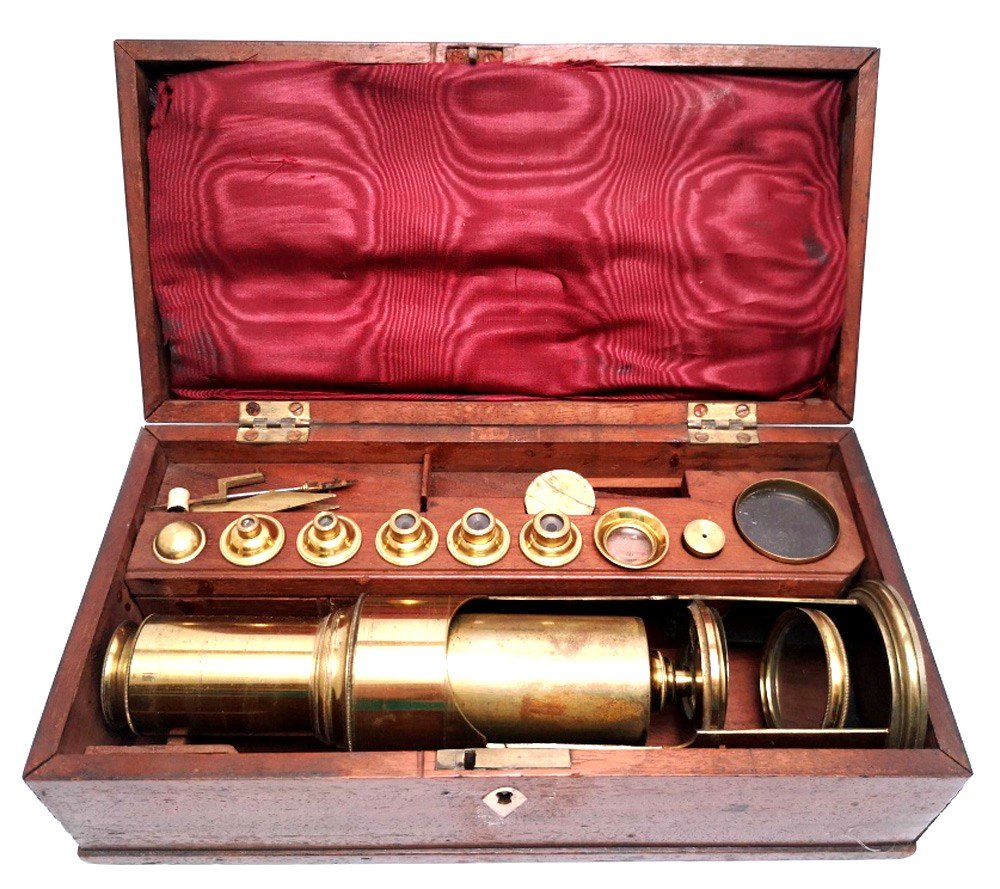

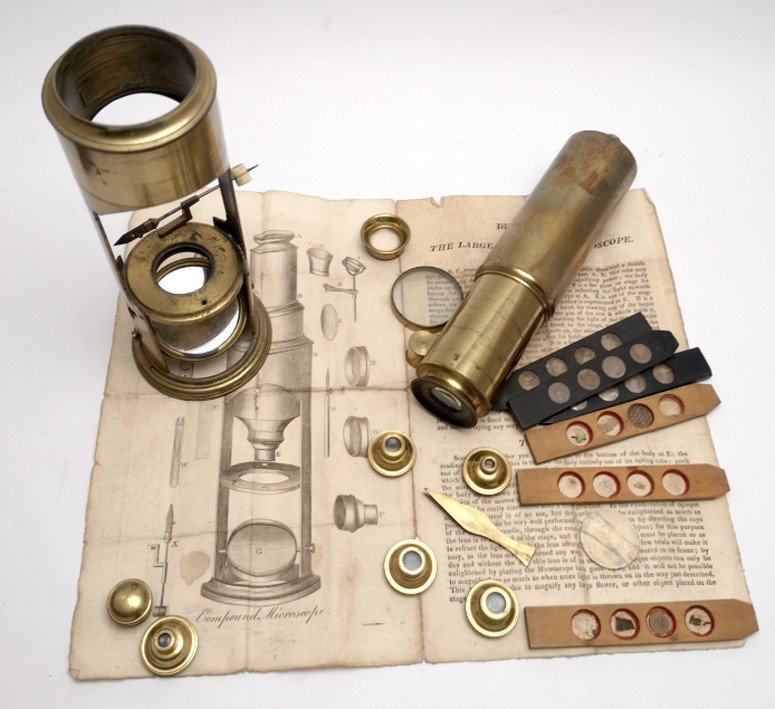
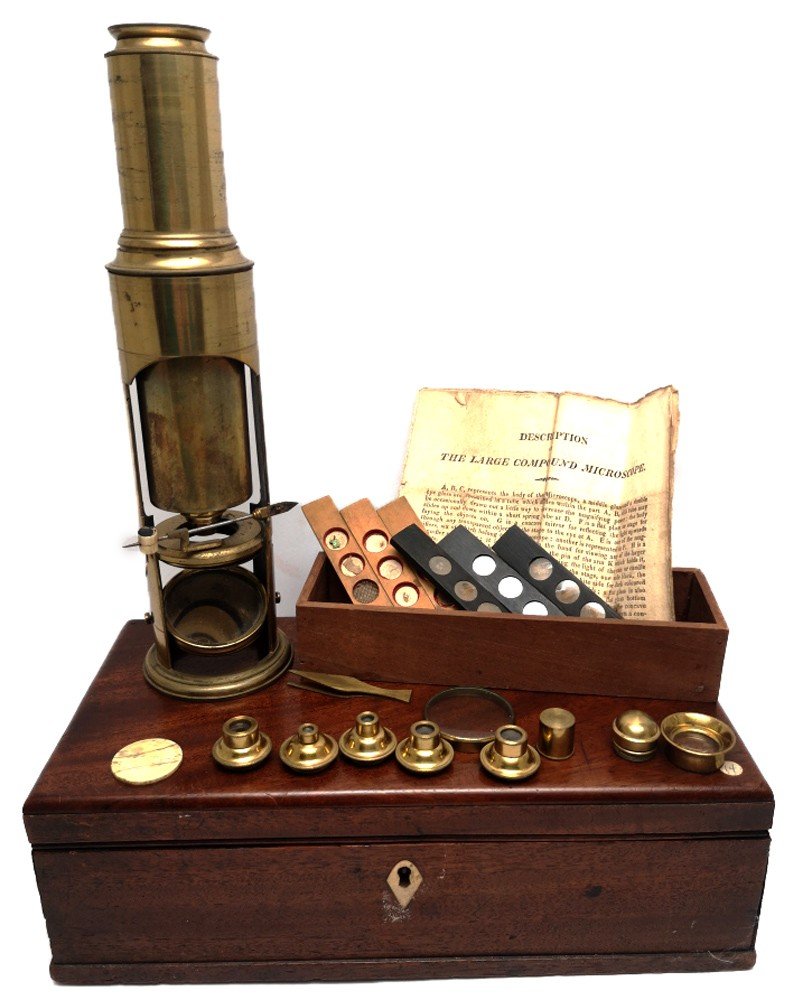
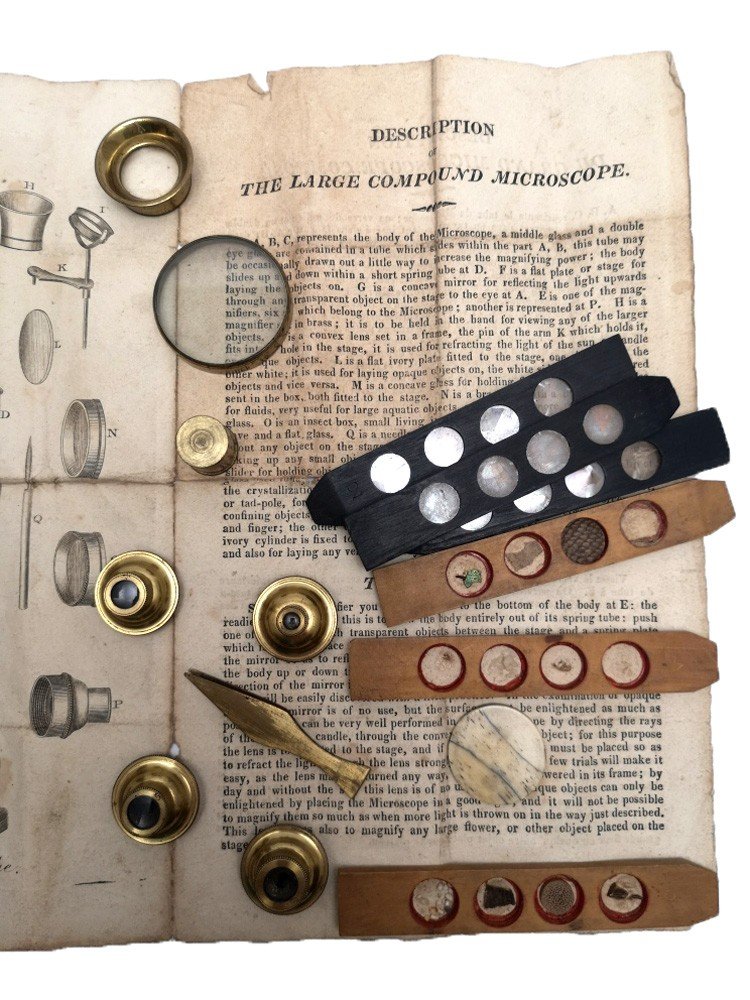








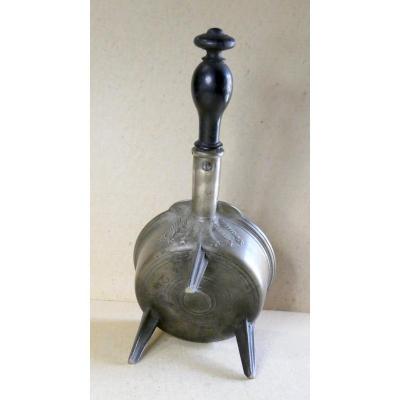




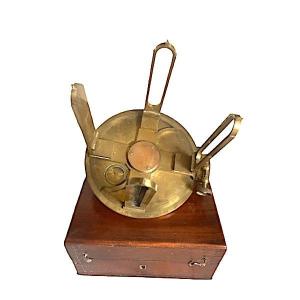



 Le Magazine de PROANTIC
Le Magazine de PROANTIC TRÉSORS Magazine
TRÉSORS Magazine Rivista Artiquariato
Rivista Artiquariato
